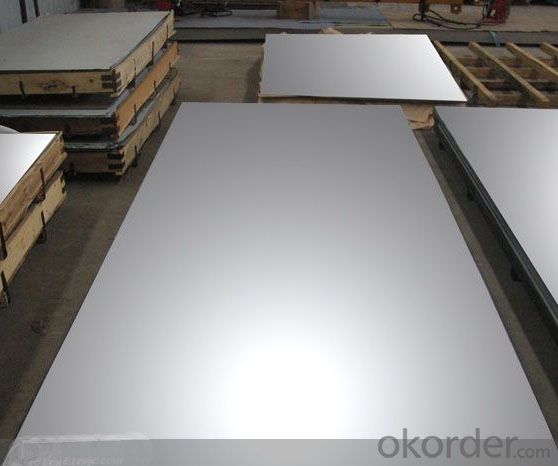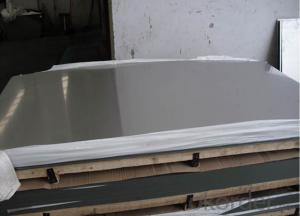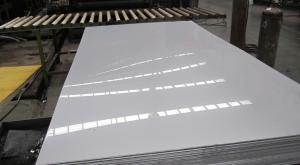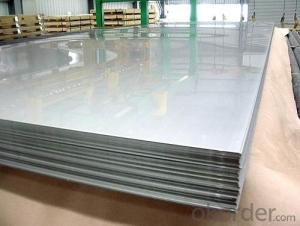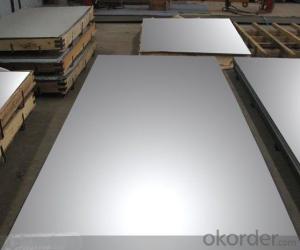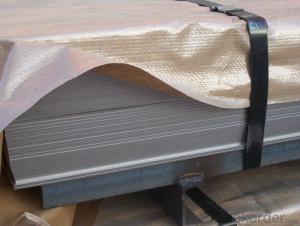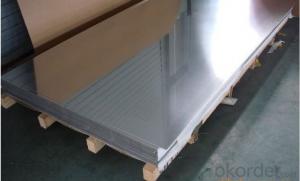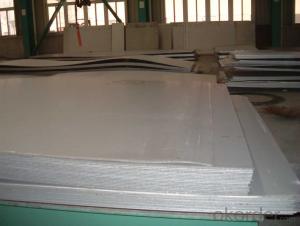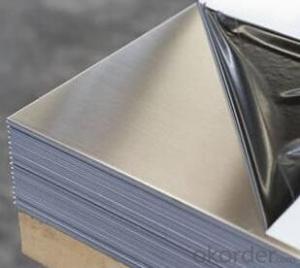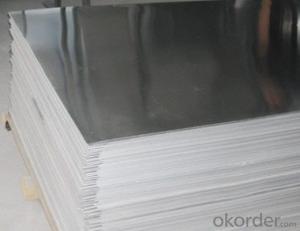Stainless Steel plate 316 with No.4 Surface Treatment
- Loading Port:
- Shanghai
- Payment Terms:
- TT OR LC
- Min Order Qty:
- 500 m.t.
- Supply Capability:
- 5000000 m.t./month
OKorder Service Pledge
OKorder Financial Service
You Might Also Like
Hot sale stainless steel sheet 201/202/304/304l/310S/309S/316L/316Ti/316/321,410/420/430/444/443/409L, and 904L.
Description of Stainless Steel Sheet:
Description | steel sheet,hot rolled steel sheet,cold rolled steel sheet, steel sheet,sheet,steel plate |
Standard | ASME, ASTM, EN ,BS,GB,DIN, JIS etc |
Application | Steel sheet applies to construction field, ships building industry, petroleum & chemical industries, war and electricity industries, food processing and medical industry, boiler heat exchanger, machinery and hardware fields. |
Packaging | Standard export sea-worthy packing |
Delivery time | 10-30 days |
Quality | No.1 |
Productivity | 500 tons/Day |
Note | Our company has cooperative relation between the domestic agents. Stainless steel sheet can be made accordingto the customers requirements. Fasten delivery. Quality assured. |
Contacts | If you have any question,please feel free contact me. |
Stainless steel sheet surface finish characteristics
Surface finish | Characteristics and application |
2B | The surface brightness and flatness of no2B is better than no2D. then through a special surface treatment to improve its mechanical properties,No2B could nearly satisfy comprehensive uses. |
No.1 | Polished with abrasive belt of grit#100-#200, have better brightness with discontinuous coarse stria, used as inner and external ornaments for building, electrical appliances and kitchen utensils etc. |
No.4 | Polished with abrasive belt of grit #150-#180,have better brightness with discontinuous coarse stria, but thinner than No3, are used as bathtub buildings inner and external ornaments electrical appliances kitchen utensils and food processing equipment etc. |
HL | Polished with abrasive belt of grit #150-#320 on the NO.4 finish and has continuous streaks, mainly used as buildings ornaments elevators, door of building, frontal plate etc. |
BA | Cold rolled, bright annealed and skin-passed, the product have excellent brightness and good reflexivity like mirror, kitchen apparatus, ornament etc. |
8K | The product have excellent brightness and prefer reflexivity can to be the mirror. |
Main Features of stainless steel sheet :
•Escalator, Elevator, Doors
•Furniture
•Production tools, Kitchen appliances, freezers, cold rooms
•Auto Parts
•Machinery and Packaging
•Equipment and Medical devices
•Transport system
Product Details:
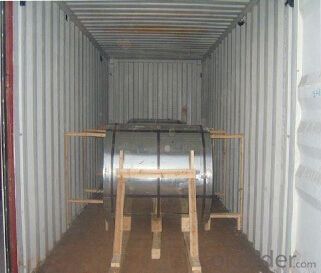
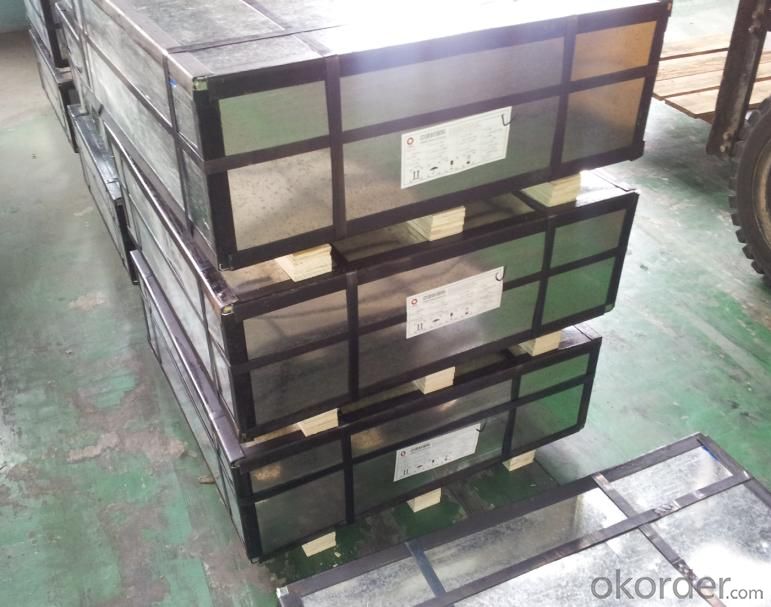
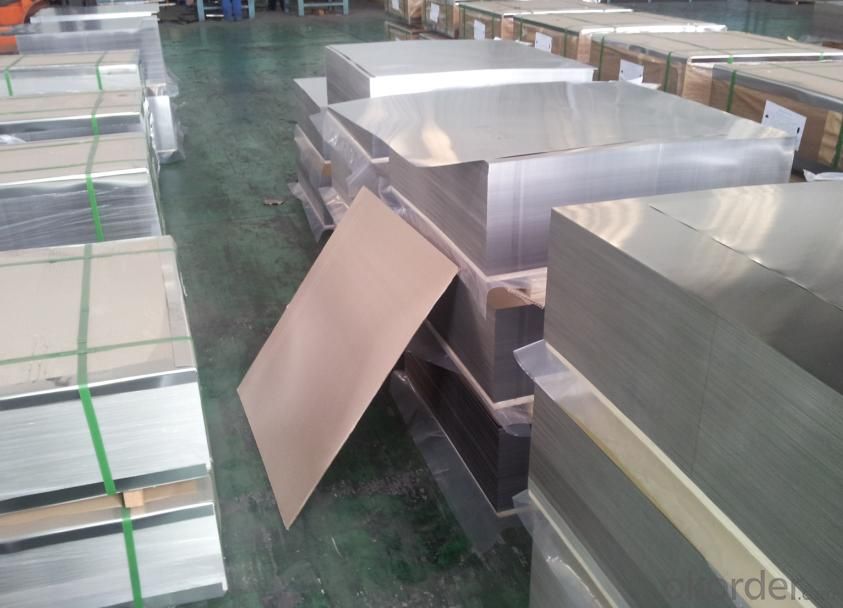
Sandard Seaworth Packing(wooden packing with water proof paper)
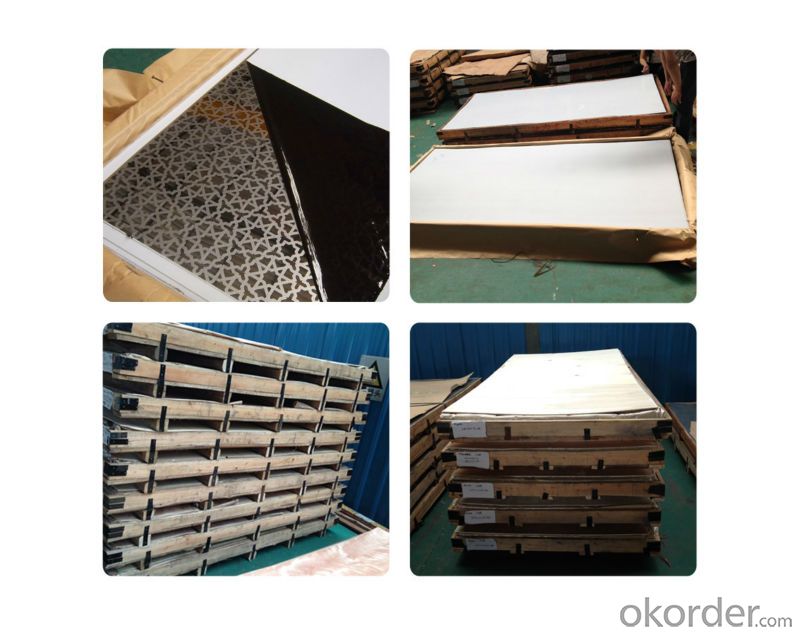
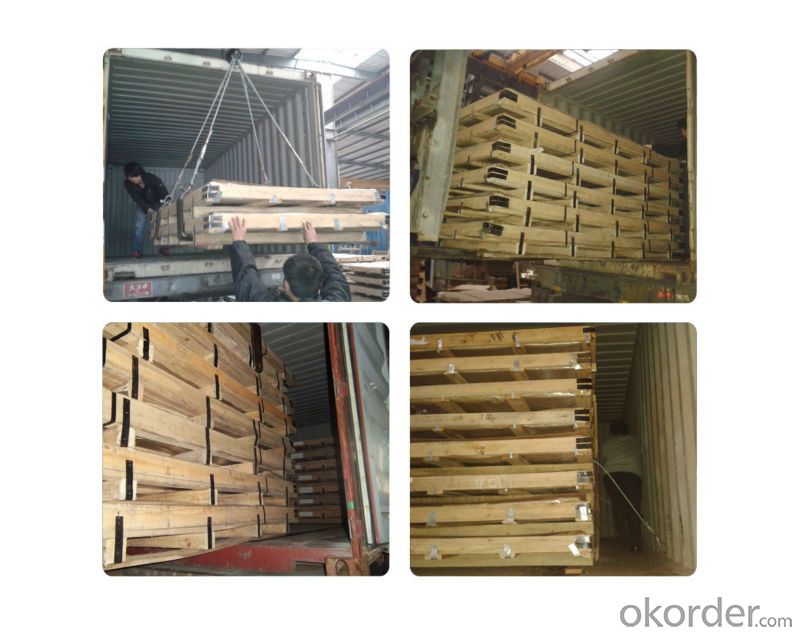
FAQ:
1. What's the quality?
very fine
2. How long get reply?
within 24 hours
If you have any question about stainless steel sheets,donot forget to sending the email to Us! You will get the competitive Price and have a very good experience about the Buying Process! CNBM International Corporation is always your trustful friend!
- Q: Stainless steel plate glued to tiles, what glue?
- For the high temperature does not exceed 200 degrees, and is transparent, can be used to connect the WB66 type of glue glue, the glue adhesive glue is professional, high temperature resistant and can be used in metal adhesive bonding, high speed, high strength, good toughness, long shelf life, suitable for viscose between ceramic and metal the.
- Q: How do you remove rust or corrosion from stainless steel sheets?
- To remove rust or corrosion from stainless steel sheets, you can follow these steps: 1. Start by cleaning the surface of the stainless steel sheet with a mild detergent and warm water. This will remove any dirt or grease that could potentially interfere with the rust removal process. 2. After cleaning, thoroughly dry the sheet to prevent any further water damage and to ensure the rust removal process is effective. 3. Next, use a non-abrasive scrubbing pad or a soft cloth to apply a stainless steel cleaner or a homemade solution made of equal parts vinegar and water. Gently rub the affected area in the direction of the grain of the stainless steel. 4. If the rust or corrosion persists, you can try using a paste made of baking soda and water or a mixture of cream of tartar and water. Apply this paste to the affected area and let it sit for about 15 minutes. Then, scrub the area gently with a soft cloth or a non-abrasive scrubbing pad. 5. If the above methods do not fully remove the rust or corrosion, you can try using a commercial rust remover specifically designed for stainless steel. Be sure to follow the instructions provided by the manufacturer and use appropriate safety precautions. 6. After removing the rust or corrosion, rinse the stainless steel sheet thoroughly with clean water and dry it completely to prevent any water spots or further damage. 7. To prevent future rust or corrosion, it is recommended to regularly clean and maintain stainless steel surfaces using non-abrasive cleaners and avoiding harsh chemicals or abrasive materials. Remember to always test any cleaning solution or rust remover on a small, inconspicuous area of the stainless steel sheet before applying it to the entire surface, to ensure it doesn't cause any damage or discoloration.
- Q: Can stainless steel sheets be used for filtration applications?
- Yes, stainless steel sheets can be used for filtration applications. Stainless steel is known for its corrosion resistance and durability, making it an excellent choice for filtration systems. The sheets can be formed into various filter elements, such as screens, discs, or cartridges, to suit different filtration needs. Stainless steel sheets offer high mechanical strength, allowing them to withstand high pressures and temperatures without deformation. Additionally, stainless steel can be easily cleaned and sanitized, making it suitable for applications where hygiene is crucial, such as in the food and beverage industry. Overall, stainless steel sheets are widely used in filtration applications due to their excellent performance and reliability.
- Q: Are stainless steel sheets suitable for elevator buttons?
- Indeed, elevator buttons can be made from stainless steel sheets. The reason behind this preference for stainless steel lies in its remarkable durability, resistance to corrosion, and effortless upkeep. Given that elevator buttons are frequently pressed by countless individuals throughout the day, stainless steel can endure the strain and continuous usage without compromising its visual allure. Moreover, stainless steel boasts simple cleaning and sanitizing procedures, rendering it an excellent hygienic option for elevator buttons. In summary, stainless steel sheets represent a superb choice for elevator buttons, delivering both resilience and a stylish, contemporary look.
- Q: Are stainless steel sheets suitable for elevator interiors?
- Yes, stainless steel sheets are highly suitable for elevator interiors due to their durability, corrosion resistance, and aesthetic appeal.
- Q: Are stainless steel sheets suitable for medical equipment or devices?
- Yes, stainless steel sheets are suitable for medical equipment or devices. They possess excellent corrosion resistance, durability, and high strength, making them ideal for use in medical settings. Stainless steel is also easy to clean and maintain, which is crucial for maintaining a sterile environment.
- Q: Can stainless steel sheets be used for pressure vessels?
- Yes, stainless steel sheets can be used for pressure vessels. Stainless steel offers excellent strength, corrosion resistance, and durability, making it a suitable material for containing high-pressure gases or liquids. Additionally, stainless steel can withstand different temperatures and is easy to clean, making it a popular choice for pressure vessel applications in industries such as chemical processing, oil and gas, and food processing.
- Q: Can stainless steel sheets be formed into complex shapes?
- Complex shapes can indeed be formed from stainless steel sheets. Stainless steel is renowned for its exceptional formability and versatility, establishing it as a highly utilized material across numerous industries. It can be readily manipulated through various fabrication techniques like bending, rolling, stamping, and deep drawing, facilitating the creation of intricate shapes with utmost precision and accuracy. Furthermore, stainless steel possesses remarkable ductility, enabling it to endure substantial deformation while retaining its mechanical properties and structural integrity. Consequently, it is frequently favored for applications necessitating intricate and tailored designs, including architectural structures, automotive components, kitchen appliances, and medical devices.
- Q: Can stainless steel sheets be used for stadium seating?
- Yes, stainless steel sheets can be used for stadium seating. Stainless steel is a durable and corrosion-resistant material, making it suitable for outdoor applications like stadium seating. It can withstand the elements, including rain, snow, and UV rays, without deteriorating or rusting. Stainless steel sheets can be fabricated and formed into various seating structures, providing a sturdy and long-lasting seating solution for stadiums. Additionally, stainless steel has an aesthetic appeal and can be finished in different ways to enhance its visual appearance, further adding to the overall design of the stadium.
- Q: Are stainless steel sheets good for industrial exhaust systems?
- Yes, stainless steel sheets are excellent for industrial exhaust systems. Stainless steel is known for its high resistance to corrosion, making it a highly durable and long-lasting material for exhaust systems. It can withstand high temperatures and extreme weather conditions, making it suitable for industrial environments. Stainless steel also has excellent strength and can handle the pressure and vibrations associated with exhaust systems. Additionally, stainless steel is easy to clean and maintain, which is important for keeping the exhaust system functioning efficiently. Overall, stainless steel sheets are a great choice for industrial exhaust systems due to their durability, corrosion resistance, and high temperature tolerance.
Send your message to us
Stainless Steel plate 316 with No.4 Surface Treatment
- Loading Port:
- Shanghai
- Payment Terms:
- TT OR LC
- Min Order Qty:
- 500 m.t.
- Supply Capability:
- 5000000 m.t./month
OKorder Service Pledge
OKorder Financial Service
Similar products
Hot products
Hot Searches
Related keywords











